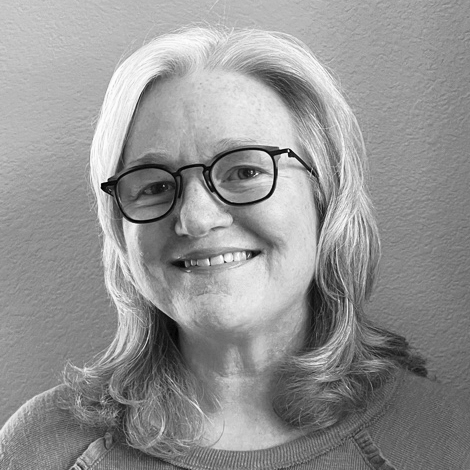Wellness & The Built Environment
A Look Back To Move Forward As Partners In Environmental Wellness
It’s our job now to stay close with our customers, and to collaborate. To create great places -- good for people and the planet -- we need to break down barriers against adopting an innovation by focusing on its value to our customers and the cost – and value – to our businesses.
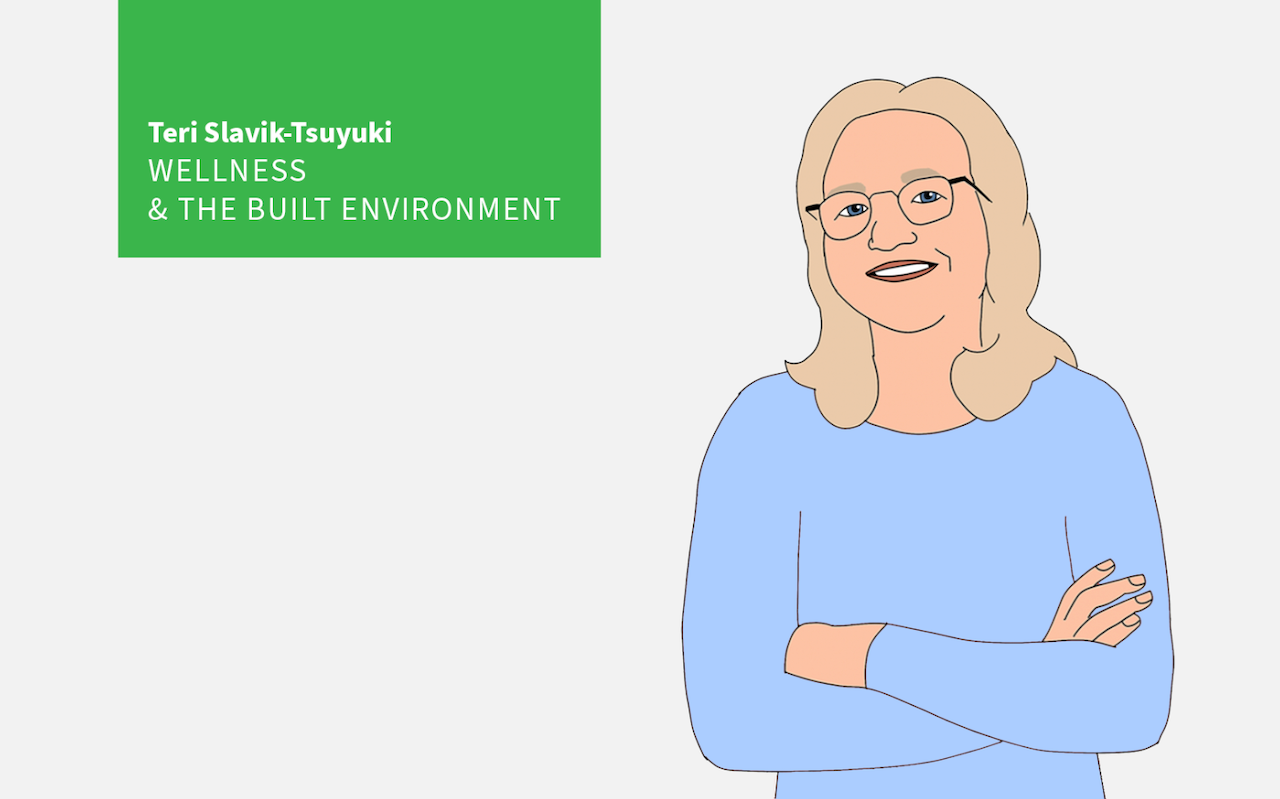
It seems like another lifetime but it was just 15 years ago.
In my role as CMO of Newland Communities in 2007, we announced the launch of the Green Home Guide. It was a partnership with the U.S. Green Building Council (USGBC), and it had a stated goal of detailing “the ways green homes can benefit your health and your pocketbook, as well as reduce negative impacts on your community and the world.”
At the time, we were proudly the first community developer with national scale to dip our toe into the waters of what folks today would refer to as environmental well-being. It got its start back then as “green” and “sustainability”.
We even developed 10 guiding principles for sustainable community design that evolved into a bedrock for every new community planning workshop – including things like construction waste recycling, wetland reclamation, gray water use and smart water control in landscaping, and requiring builder partners to adopt Energy Star or the equivalent in their market area. Much of this is like a seatbelt in a car today. And in 2007, we learned through a resident survey that four out of five (80%) of residents felt issues surrounding the environment were more important to them than they were five years earlier, which was an increase from the 61% who said the same thing a year prior, in 2006.
In those early days our builder partners struggled with how to make the value proposition of green and sustainability features in the home matter to customers. In one of our North Carolina communities, builders told us it added up to $8,000 to the cost of the home and made it difficult for them to sell to consumers. A year later we weathered the Great Recession and to some extent all bets were off, as “green” and “sustainable” features were still dismissed by many as fringe ideas.
Consumers value positive environmental impact
Fast forward to life after the global health pandemic, when Wave Three of the America at Home Study asked 3,000 consumers:
How important are each of the following features to your personal wellness?”
Results were crystal clear that consumers today connect home features and technologies to their personal and environmental wellness.
Water and energy resource conservation, VOC-free materials, low energy windows all ranked very important to more than half of respondents. The explicit choice, “A home that minimizes its impact on the environment” was very important to almost half of respondents, and not just Millennials. One Gen X and two Baby Boom segments ranked this higher on their list of concerns than all respondents combined.
Flashback to the pioneering attempts to make these ideas stick in 2007 and we’re reminded that back then the top sustainability and green motivator for consumers was saving money. Anything additive to a home that couldn’t demonstrate a reduction in costs was easy for builders to eliminate. At this post-pandemic moment, “saves me money” has been soundly replaced by “improves my health and wellness” as consumers’ No. 1 purchase motivator. They’re making the direct connection between the environmental impact of the homes and communities they choose and their own personal well-being.
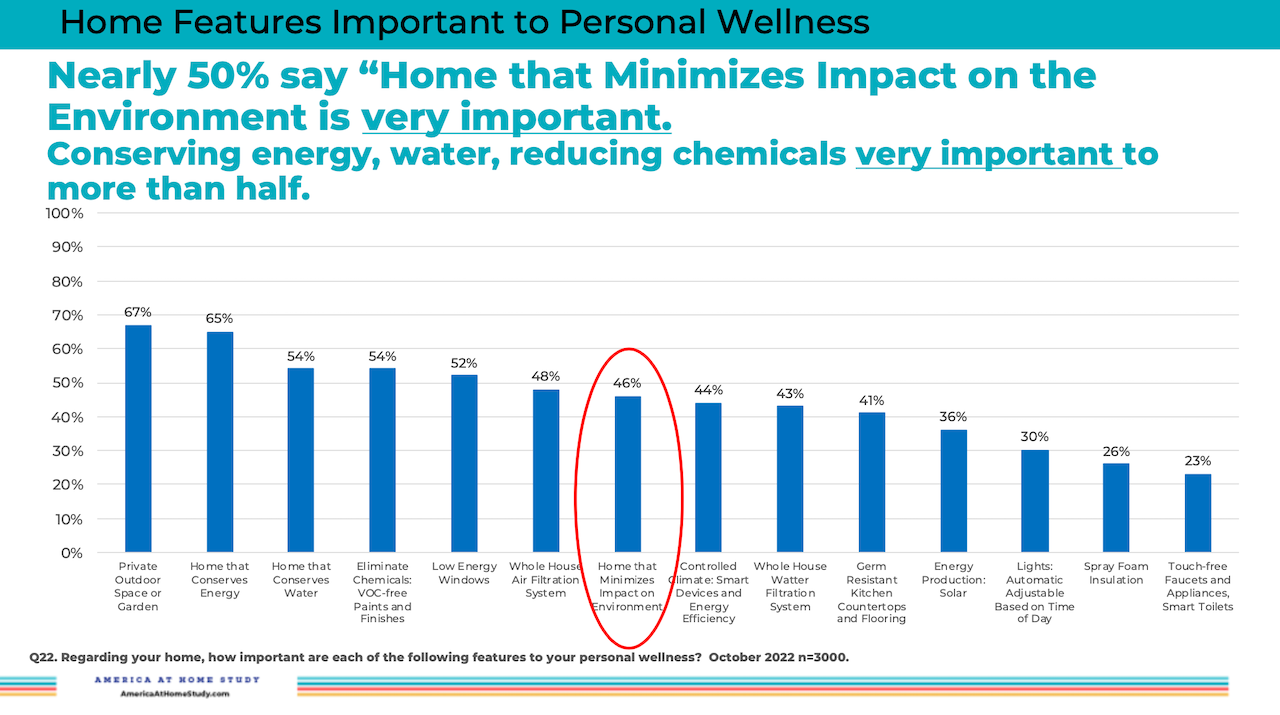
It’s a connection that is now more direct than ever. According to the UN's 2020 Global Status Report for Buildings and Construction, the building and construction sector generates 38% of annual global carbon emissions, 74% related to energy use (“operational” carbon), and 26% from the materials used and the carbon emitted during the construction stage (“embodied” carbon). And it’s a connection that merits following a little further.
Carbon dioxide is the primary greenhouse gas contributing to climate change in our atmosphere. Climate change is supercharging the increased frequency and intensity of extreme weather – floods, fires, droughts, hurricanes – that lead to billion-dollar disasters. The National Oceanic and Atmospheric Administration just this month announced that 2023 is the worst year on record for expensive weather disasters in the US, with 23 extreme weather events each costing at least $1 billion so far, with four months still remaining in the year, eclipsing the year-long record total of 22 set in 2020.
Now is not the time to look away from these sinister stats or stick our heads in the sand. While they may like it or not, real estate owners and developers are starting to feel pressure from investors and others to figure out the complexities and realities of how to decarbonize. My short 15-year retrospective shows environmental well-being is more important than ever to the consumers our noble industry serves. That’s truly what matters most. So, what can we do about it?
At the Largest Scale: Begin with the Land
Land planning decisions made at 30,000 feet affect overall environmental wellness, and the quality of life on the ground. Roadway placement and widths, working with the topography through grading to balance the dirt moved around the site, and the carbon generated to do so. Drainage studies that intentionally increase the amount of impervious surface of the land, allowing water a place to go and to recharge aquifers, minimizing potential for future flooding, and providing welcome greenspaces for people. Intentionally studying solar and wind orientation and siting buildings to maximize the use of natural resources and minimize adverse effects to people. And in the western regions especially, dealing with wildfire.
The California Building Industry Association, studying wildfire damage since 2017, found wildfire incidents are more impactful on older homes, with only 1% of the homes destroyed or damaged in recent fires built after 2010.
In 2020 the Urban Land Institute published Firebreak: Wildfire Resilience Strategies for Real Estate and because of its position as the largest new home community in the state of California, and its location surrounded by 23,000 acres of hillside open space, Rancho Mission Viejo was a featured case study in wildfire resilience, with lessons that can transfer to other large scale developments.
Consideration of wildfires has been a part of every major land use decision we’ve made since we started considering developing the property,” says Jay Bullock, Vice President of Planning and Entitlement, Rancho Mission Viejo.
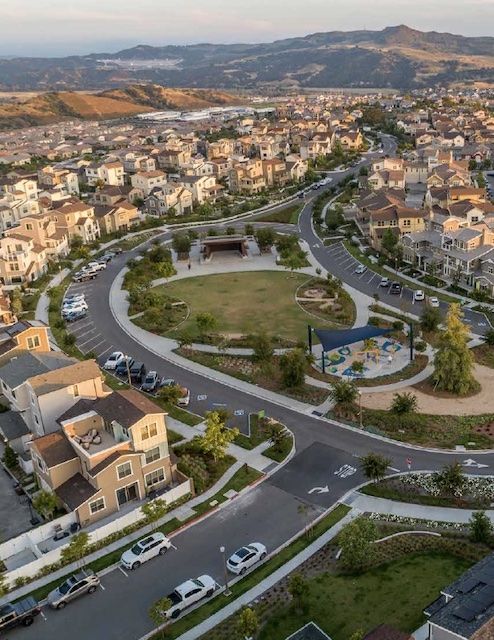
This intentionality has resulted in the Ranch Plan Fire Protection Program, a three-party agreement with local jurisdictions detailing construction code requirements, fuel modification zones based on sophisticated research and fire behavior modeling, with housing development clustered in neighborhoods surrounded by 110-foot-wide buffers of defensible space, up to 170-feet in higher risk areas, landscape and plant species restrictions, emergency vehicle access plans, and detailed reviews at multiple levels of planning.
Smaller Scale: Finer Grain Product Segmentation
Where and how we choose to live has the biggest impact on environmental wellness. The people with the lowest climate impact in the US likely live in Manhattan, in smaller homes because it’s more expensive, and they typically take far fewer car trips and travel far fewer miles in vehicles, with more walkable services available. The walls are coming down in traditional master-planned communities, literally, as developers see the financial, and environmental value of diversifying product segmentation, integrating multi-family, build-to-rent, and a refreshing mix of attached and detached innovative smaller homes.
For a community developer, this takes strong builder collaboration. In suburban Houston, Meristem Communities’ “urban in the suburbs” vision for their Indigo community drove a phase one product segmentation plan including 500 square-foot for sale apartments over retail, and single-family cottage homes starting at 800 square-feet, woven into a finer grain product mix throughout the whole community. Scott Snodgrass, co-founder of Meristem hints they plan to push for even more innovative for rent and for sale product in their next phase, putting people’s impact on the planet and energy resilience at the core of their builder collaborations, community activation and amenity strategy.
There may be a scenario where we are doing very small lots with really small homes, and so that’s a risk alone on the builders’ part in taking down lots, where we’ve created environmental benefits by them doing that and by us leaving all this land in open space. So, in that case we are going to look at where we can have the biggest impact and then focus in that area. I do think that energy generation and storage are big environmental impact areas and so the builders may be a part of that as well,” Snodgrass explains.
Modern Construction Methods
3D volumetric construction. Panelized walls. A systems approach to design and manufacturing. Flatpack systems. Modular and prefabricated rooms. Off-site construction has been around for centuries, enabling entire structures to be pre-engineered and fabricated off-site, and transported to a final location for assembly. These solutions generate far less material waste and carbon than onsite construction and have the potential to deliver homes with less and more predictable labor. Yet still, taken on its own, offsite construction requires significant up front capital investment and more design coordination than conventional construction to fully deliver on its promise of quality, speed, and economy.
Given these current realities, the Housing Innovation Alliance saw an opportunity to create an online resource – the Off-Site Heat Map – to connect production homebuilders and developers interested in partnering with off-site solution partners to construct and deliver housing together. This online tool was created with support from leading industry associations and has identified nearly 1,500 off-site construction service providers to date, willing to collaborate to create more sustainable housing solutions.
Material Selection: A Tangible Choice
No matter the method of construction, choosing what materials are used in the home can have a massive impact on environmental wellness. With a mission to turn buildings into climate solutions, Nicole Granath, co-founder of building software company, Tangible Materials is creating what amounts to a food label for building products and materials. Two much sugar in that energy drink? Here’s another option. The idea being, if you know what went into it, you have a better chance of knowing what will come out of it. The same holds true for the materials used to construct homes.
At Tangible, we are building a one-stop solution for developers, architects, and others in real estate who want to understand the carbon footprint of their building materials and identify more sustainable alternatives in real time,” she explains.
This start-up helps builders measure embodied carbon over time across their portfolio, find opportunities to reduce it at all stages to meet carbon goals, and export reports at a portfolio or project level to meet regulatory standards.
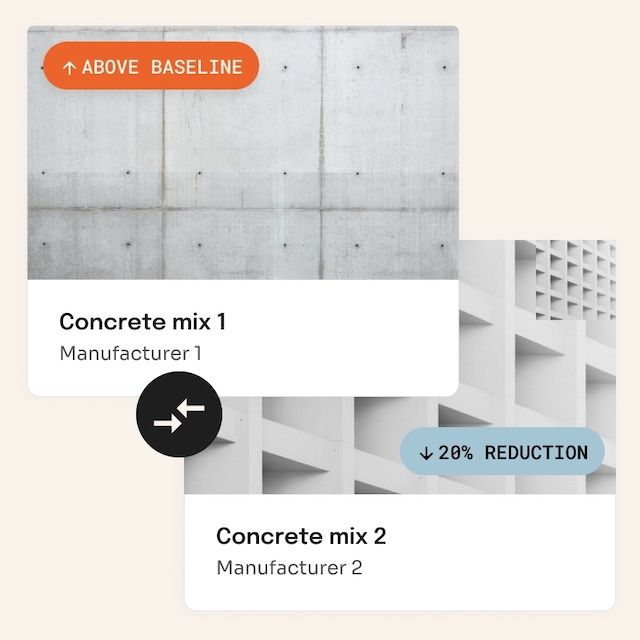
Ask. Demonstrate. Ask again.
The diffusion-of-innovation theory says adoption starts with innovators, early adopters, late adopters and eventually spreads through the whole population. If the pandemic served to speed up our consumers’ desire to live in homes and communities that actively work to improve their health and well-being, the speed of that adoption cycle is accelerating. The impact the housing and community development industry can have on environmental well-being is clear. It’s our job now to stay close with our customers, and to collaborate across industry partners to understand the barriers against adopting an innovation, to ask about the value of that innovation to our customers and the cost – or value – to our businesses, and to create places that are good for people, and the planet.
MORE IN Wellness & The Built Environment
Rezoned For A Future That Bridges Timely, Timeless Values
Nolen Communities put in the work to turn a coastal California site into a thriving 20-acre agrihood, Fox Point Farms.
TBD Case: Here Is A Build-To- Rent Wellness Community Model
A look at how Zeal for Living aims to boost the health and well-being of renters.
Civic Well-Being: The New Rules Of Engagement In Placemaking
The spaces and places we create in the form of new home communities, smaller scale infill neighborhoods, or multi-family and mixed-use communities stand as blank canvases on and in which civic connections occur.
